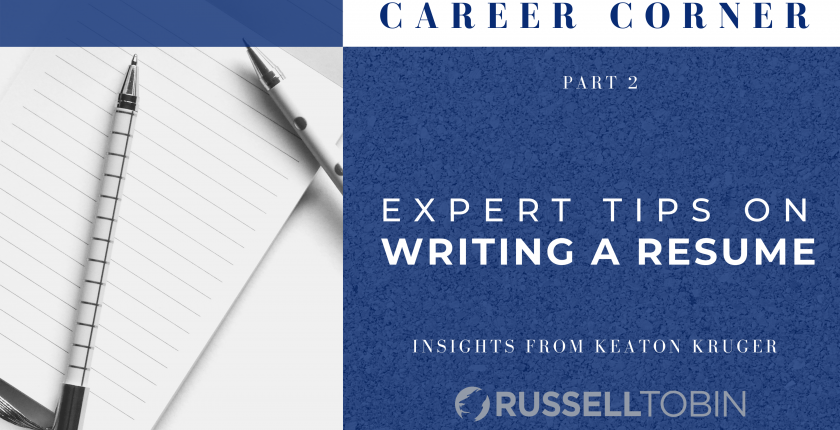So, you’ve started your job search. After narrowing down what roles and companies you are interested in, it’s time to start applying to these new opportunities. Before you click the “apply” button, ask yourself if your resume is up to date with all the latest and greatest projects, job titles, professional accomplishments, and new skill sets you may have recently learned. This is the best place to show off your amazing talents and successes.
Every resume should have a similar format, but they’re not all created equal. After adding all your basics, such as your name and contact information, your resume should be broken into several different parts. We recommend adding your previous work experiences, skillsets, educational background and academic achievements, and any additional internal or external organizational involvement (such as volunteering). And before you submit your application, be sure to keep the desired role in mind when crafting your resume so it reflects the job description to the role you’re applying to.
When adding your work experience, include the basics like company name, location, title of the role you held, the month and year of your start and finish dates, and about three to five bullets summing up your duties. Try to think of ways you can create connections between your previous responsibilities and the ones required for the role you are applying to. To dive deeper into your background and highlight your nitty-gritty skillsets, add a section that features hard and soft skills you’ve acquired: things like programs you’re proficient in, languages you can speak, any additional technical experience you have, or even how you’ve mastered the art of communication and team leadership. For your education section, we recommend adding the school name, location, degree obtained, majors, minors, and any certifications you may have received.
Tailoring your resume to a specific job you are applying to will allow it to stand out among potentially hundreds of other applicants. Usebuzzwordsand other key terms, phrases, or qualifications the company is looking for from the desired candidate. Adding these buzzwords and highlighting those certain skills gives you the ability to emphasize that your past experience alignswith what they’re looking for.
A popular question that comes up is “how far back should my resume go?” We suggest only adding relevant roles or roles you’ve held in the last five to ten years. For any recent graduates without tons of professional experience, it’s is helpful to include relevant coursework such as a Capstone project or specific courses you took throughout your time in college. Additionally, it’s not necessary to include roles or activities from high school. When summing up your college experience, it is alright to add organizations, awards, or extra curriculars, but remember to keep this as a high-level overview and not an in-depth description.
Important Tip: Because most applications are done online, it’s best practice to save your resume as a PDF. This specific format allows those special keywords to be picked up by an ATS and other recruiting software, and it’s a universal file type that can be opened and viewed on many different devices and email platforms.
After applying to your dream position, you may ask yourself, “What now?” Every company is different in their overall hiring process. Depending on the urgency to fill a position, this may speed up or delay the response you receive from the hiring manager. For those of you who get anxious waiting for feedback, here are three easy steps you can take to stay up-to-datewith your application:
After your application is submitted, the toughest part of the application process begins: waiting to hear back! By adapting your resume and showing your enthusiasm as a candidate upon your application submission, we hope these courses of action help you stand out from the rest so you can start your journey in that new role.
- Following up with your recruiter (if you used one) is a great place to start. A recruiter usually has direct contact with either the hiring manager or internal talent acquisition specialist.
- Checking in on the status or progressvia email or LinkedIn is another option. See if their website or the LinkedIn job page lists who posted the role and feel free to reach out to them directly.
- If you are not working with a recruiter, try researching who the hiring manager might be through the company’s LinkedIn page, and send them either an InMail or follow–up emailto reiterate your interest. This can make you stand out in a large group of candidates.

 Helping the
Helping the Specialized
Specialized Industrial
Industrial Healthcare
Healthcare MSP & Contingent
MSP & Contingent Innovative
Innovative Business
Business








